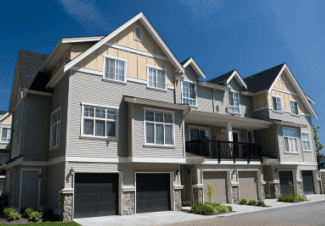Doing the calculations on purchasing a rental property

There are two hurdles you need to clear to ensure you’re buying at the right price. First, you need equity in the home on Day One to ensure a margin of safety and that the property will make money or at least break even each month.
Two Calculations to Determine Your Purchase Price
Calculation 1 — Your total property acquisition costs should be no more than about 80 percent of what the home is worth once it’s repaired. That means the purchase price plus closing costs plus renovations expense should be equal to or less than 80 percent of the home’s market value. Is a deal like that easy to find? No, but home flippers have to find a house even cheaper than that, so it’s very doable. Realtors will bring a deal to you before they bring it to a flipper because they know you’ll pay a little more.
Why is the 80 percent important? It gives you instant equity that is powerful in wealth building and safety. Also, 80 percent of the value is usually about what a bank will let you refinance a home for, so you can feasibly refinance all your money out of the deal to repeat the process the following year. Paying 80 percent of the home’s market value helps – doesn’t guarantee – your rental income will exceed your expenses each month, giving you positive cash flow.
If you have a property financed at 90 percent or more of its value, it’s usually pretty hard to make money each month from the rent. You’ll also run the risk of being over leveraged which makes it difficult and dangerous to buy more properties.
Make sure you know your expenses. Holding costs such as taxes, insurance, utilities, maintenance, management, vacancy and HOA fees typically equal between 35 percent and 55 percent of your gross rent. Note that doesn’t include your mortgage payment.
Now does 20 percent equity guarantee you’ll have a positive cash flowing property? No, it doesn’t. This is a rule of thumb, a starting point. Depending on the market and prevailing rents, you may be able to get away with 15 percent equity or you may need to get 25 percent or more. In most of the Washington area, you’ll likely need much more than 25 percent equity to make a rental house cash flow.
Calculation 2 — The monthly rent on the property needs to be equal to or greater than 1 percent of your total property purchase cost. I actually shoot for about 1.2-1.4 percent. For example:
- Purchase price = $65,000
- Closing cost = $3,000
- Renovations = $12,000
- Total property costs = $80,000
- $80,000 x 0.01 = $800
In this scenario, your monthly rent needs to be $800 or more per month to justify that property cost. So, as a very general rule, you need to get $1,000 of monthly rent for every $100,000 of property cost, not market value. It’s very hard to get that in most of our area.
If you know a property will only rent for $1,000 per month, then you know you can only pay about $100,000 for that home. So you can work the number frontward and backward.
Source: washingtonpost.com















 Accessibility
Accessibility